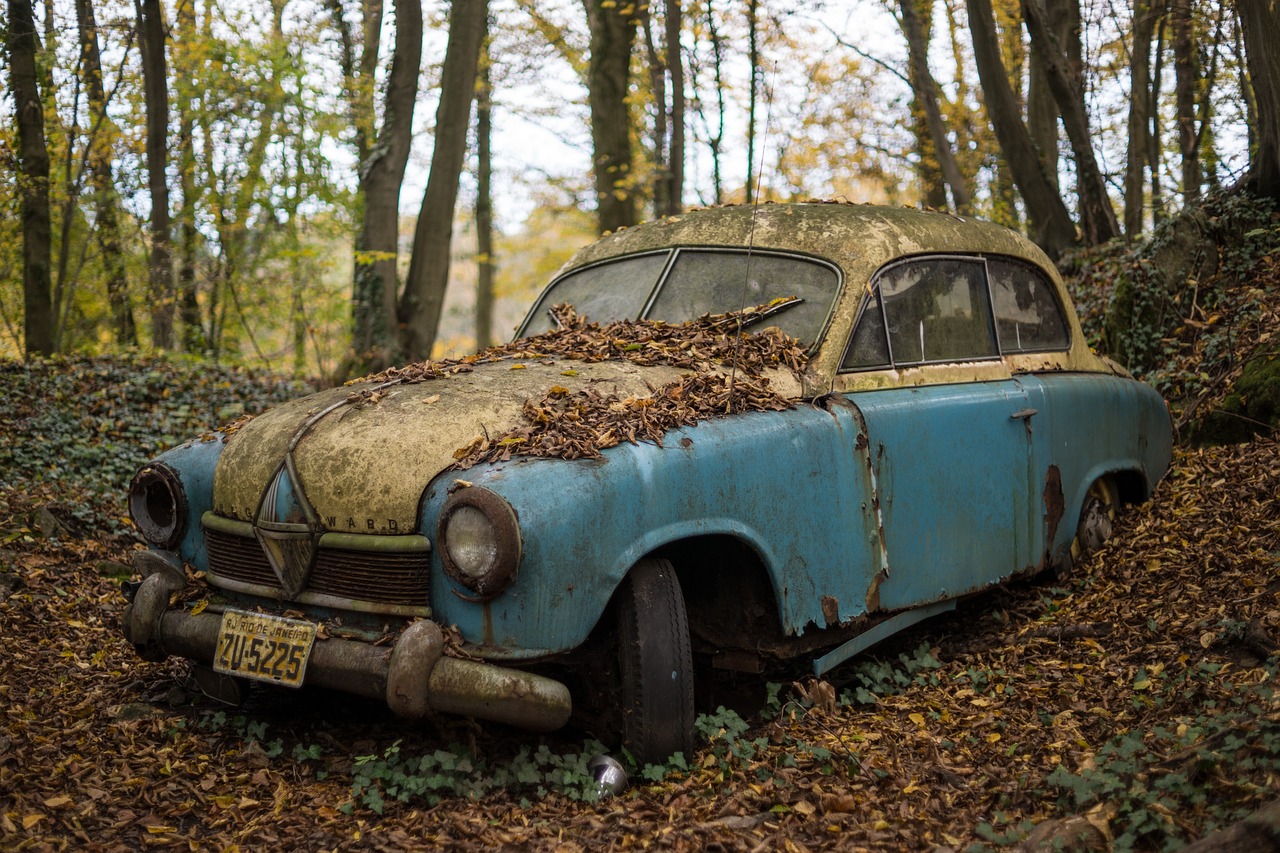Discover the Timeless Charm of McCoy Vases: A Journey Through the Years

Introduction to McCoy Vases
Step back in time and explore the enchanting world of McCoy vases. These iconic pieces, crafted from the 1940s to the 1960s, are not just vases; they are a symbol of elegance and nostalgia. As we journey through the years, let us discover the charm that continues to captivate collectors and enthusiasts alike.
The Origins of McCoy Pottery
McCoy Pottery was founded in 1910 in Roseville, Ohio, and quickly became known for its high-quality ceramics. The 1940s marked a significant period of innovation and creativity for the company, leading to the production of stunning vases that would become timeless treasures.
Characteristics of McCoy Vases
What makes McCoy vases so special? Here are some defining features:
- Artistic Designs: From floral patterns to abstract shapes, McCoy vases showcase a variety of artistic styles.
- Vibrant Colors: The use of rich, bold colors like turquoise, yellow, and green adds to their allure.
- Quality Craftsmanship: Each piece is crafted with care, demonstrating exceptional attention to detail.
Popular Styles and Eras
McCoy vases evolved through various styles during their production years. Here’s a quick overview:
| Era | Style | Notable Features |
|---|---|---|
| 1940s | Art Deco | Geometric shapes, bold colors |
| 1950s | Mid-Century Modern | Sleek lines, organic forms |
| 1960s | Folk Art | Rustic designs, earthy tones |
Why Collect McCoy Vases?
For many elderly collectors, McCoy vases represent more than just decorative pieces; they evoke memories and stories. Consider these reasons for starting or enhancing your collection:
- Nostalgia: Each vase tells a story, connecting you to the past.
- Investment: Vintage McCoy vases can appreciate in value over time.
- Community: Join a vibrant community of collectors who share tips and stories.
How to Care for Your McCoy Vases
To ensure your McCoy vases remain beautiful for years to come, follow these simple care tips:
- Use a soft cloth for cleaning to avoid scratches.
- Avoid harsh chemicals that can damage the glaze.
- Store in a cool, dry place away from direct sunlight.
Conclusion: Embrace the Timeless Charm
As we reflect on the classic McCoy vase planters from the 1940s to the 1960s, we invite you to embrace their timeless charm. Whether you’re a seasoned collector or a newcomer, these vases offer a unique glimpse into a cherished era of design and craftsmanship.
Uncover the Artistry: What Makes McCoy Planters a Collector’s Dream?

Discovering the Craftsmanship
Have you ever held a piece of McCoy pottery in your hands? You might have noticed the smooth finish and vibrant glazes that capture the light beautifully. McCoy planters, crafted between the 1940s and 1960s, are not just functional items; they are works of art.
Why Collectors Adore McCoy Planters
What sets McCoy planters apart? Durability and design play significant roles. The unique shapes and patterns reflect the art deco and mid-century modern styles that define this era. Plus, each piece is imbued with history, making it a cherished treasure.
The Allure of Vintage
Many collectors find joy in the vintage appeal of McCoy pottery. These planters were often produced in limited runs, making them more desirable. Do you have a favorite color or design? The rich hues of green, blue, and yellow are particularly sought after by enthusiasts.
Functional Beauty
McCoy planters were designed not just for looks, but for functionality as well. Their drainage holes and sturdy bases ensure your plants thrive. Imagine placing a vibrant flower arrangement in a classic McCoy planter—it’s like bringing a piece of history into your home. Can you picture it?
Connecting Generations
For many, McCoy planters evoke memories of family gatherings and home decor from days gone by. Have you inherited any McCoy pieces? Sharing stories about these planters can bridge generational gaps, making them more than just collectibles—they become conversation starters.
Tips for Starting Your Collection
If you’re considering diving into the world of McCoy planters, here are some tips:
Research: Learn about different styles and eras.
Attend Shows: Look for antique shows or online auctions.
Care for Your Pieces: Keep them clean and free from damage.
It can be a fulfilling hobby and a way to connect with others who share your passion.
Final Thoughts
Collecting McCoy planters is more than just acquiring items; it’s about preserving a part of history. What stories do your McCoy planters hold? Each piece has a journey, and by collecting, you become a part of that story.
The Stories Behind the Styles: Iconic Designs of the 1940s to 1960s

Discovering the Era of Timeless Design
The 1940s to 1960s was a remarkable period for design, marked by innovation, creativity, and a touch of nostalgia. This era birthed numerous iconic styles, each with its unique story to tell. Let’s embark on an interactive journey through the striking designs of this time, focusing on the beloved McCoy Vase Planters.
McCoy Pottery: A Legacy of Craftsmanship
Founded in 1910, McCoy Pottery quickly became a household name, especially in the mid-20th century. Their vases and planters were not just functional; they were pieces of art. Can you recall a McCoy piece that once adorned your home? Many families treasure these pieces!
Iconic Styles: A Closer Look
- Art Deco Influences: The sharp lines and geometric shapes of the Art Deco movement transitioned into the designs of the 1940s. McCoy embraced these elements, creating vases that were both elegant and bold.
- Mid-Century Modern: The 1950s introduced a wave of simplicity and functionality. Curved forms and vibrant colors became hallmarks of McCoy’s designs during this period. What colors do you remember seeing in your family’s home?
- Nature-Inspired Designs: Drawing from the beauty of nature, McCoy incorporated elements like leaves and flowers into their planters. This connection to the organic world resonated deeply with many. Do you have a favorite flower that reminds you of this time?
Personal Connections: Share Your Memories
As we reflect on these iconic designs, think about how they might have influenced your home. Did your parents or grandparents own a McCoy vase? Perhaps it was a centerpiece during family gatherings or a cherished gift. Each piece has a story, and we would love to hear yours!
Preserving the Legacy
Today, many collectors seek out McCoy pottery, not only for its beauty but also for its historical significance. Do you still have a piece in your collection? Preserving these treasures allows us to keep the stories of our past alive.
Conclusion: Timeless Elegance Endures
The McCoy Vase Planter, along with other designs from the 1940s to 1960s, represents a timeless elegance that continues to inspire. As you admire your own collection, remember the stories behind these styles and the memories they hold.
A Nostalgic Touch: How McCoy Vases Enhance Your Home Decor
Have you ever wondered how certain pieces of decor can transport you back in time? The classic McCoy vases from the 1940s to 1960s do just that. Their unique designs and rich history make them not just vases, but cherished memories.
Why Choose McCoy Vases?
McCoy vases are not just beautiful; they carry a story. Here are some reasons why they make a perfect addition to your home:
Quality Craftsmanship: Each vase is handcrafted, showcasing meticulous attention to detail.
Variety of Designs: From elegant curves to vibrant colors, there’s a McCoy vase for every taste.
Nostalgia: These vases remind us of simpler times, evoking warm memories.
Ways to Incorporate McCoy Vases in Your Decor
Wondering how to display your McCoy vases? Here are some interactive ideas:
| Idea | Description |
|---|---|
| Centerpiece on Dining Table | Fill a McCoy vase with fresh flowers for a stunning focal point. |
| Bookshelf Accent | Place a vintage McCoy vase among books for a nostalgic touch. |
| Entryway Welcome | Use a McCoy vase to greet guests with fresh blooms as they enter your home. |
Care Tips for Your McCoy Vases
To keep your vases looking their best, consider these care tips:
Regular Dusting: Gently dust your vases to maintain their shine.
Avoid Harsh Chemicals: Use mild soap and water for cleaning.
Store Carefully: If not in use, store them in a safe place to prevent damage.
Conclusion: A Touch of Elegance
Incorporating McCoy vases into your home decor not only beautifies your space but also adds a touch of timeless elegance. Whether you’re displaying them for their aesthetic appeal or cherishing them as a reminder of the past, McCoy vases are sure to enhance your home.
Preserving Memories: Caring for Your Vintage McCoy Planter
Understanding Your Vintage McCoy Planter
Your McCoy planter is more than just a decorative piece; it holds memories and stories from decades past. These classic vases from the 1940s to 1960s are cherished for their timeless designs and craftsmanship. To keep your vintage treasure in pristine condition, understanding its materials and construction is essential.
Gentle Cleaning Techniques
Cleaning your McCoy planter requires a delicate touch. Here’s how you can do it:
- Dusting: Use a soft, dry microfiber cloth to gently remove dust. Avoid abrasive materials that could scratch the surface.
- Washing: If your planter needs a deeper clean, fill a basin with lukewarm water and add a few drops of mild dish soap. Soak a soft cloth in this solution, wring it out, and wipe the planter carefully.
- Drying: Always air dry your planter upright to prevent water from collecting in the base, which can lead to damage.
Preventing Damage
To ensure the longevity of your McCoy planter, consider the following:
- Location: Keep your planter away from direct sunlight to prevent fading. Choose a stable surface to avoid accidental falls.
- Temperature: Avoid exposing your planter to extreme temperatures. A consistent, moderate climate is ideal.
- Handling: When moving your planter, always use both hands. Support the base and avoid pulling on the rim to prevent cracks.
Restoring Vintage Charm
If your planter has minor chips or cracks, consider these restoration tips:
- Fillers: Use porcelain or ceramic fillers to repair small chips. Follow the manufacturer’s instructions carefully.
- Paint: For touch-ups, select non-toxic ceramic paint that matches the original color. A steady hand will help maintain the planter’s integrity.
Storing Your Planter
If you need to store your McCoy planter, remember these guidelines:
- Wrap it: Use bubble wrap or soft cloths to wrap the planter securely.
- Box it: Place it in a sturdy box and label it clearly to avoid confusion.
- Temperature control: Store it in a cool, dry place to prevent moisture damage.
Connecting with Others
Sharing your love for vintage McCoy planters can be a rewarding experience. Consider:
- Joining clubs: Look for local or online collector groups where you can swap stories and tips.
- Hosting gatherings: Invite friends or family to share their memories and experiences with vintage decor.
Your McCoy planter is a treasure that deserves care and attention. By following these simple guidelines, you can preserve its beauty and the memories it holds for years to come.
From Simple Beginnings to Iconic Status: The Evolution of McCoy Pottery
Introduction to McCoy Pottery
Welcome to a journey through time, exploring the captivating story of McCoy Pottery. Born in the early 20th century, this American ceramic brand began with humble roots, gradually evolving into a symbol of timeless elegance and craftsmanship.
The Early Years: 1940s
In the 1940s, McCoy Pottery emerged from the Great Depression, focusing on functional yet attractive pieces. Can you imagine the excitement of finding a beautiful vase that was both affordable and durable?
During this period, the company introduced simple designs that appealed to everyday consumers. The iconic McCoy vase began its journey, showcasing a blend of utility and style. This era was marked by earthy tones and straightforward shapes, perfect for any home.
The 1950s: A Shift in Design
As we move into the 1950s, the design aesthetic of McCoy Pottery experienced a vibrant transformation. With the post-war economic boom, people were ready to embrace color and creativity in their homes.
McCoy introduced an array of vibrant glazes and playful shapes. Do you remember the excitement of seeing a bright, cheerful planter gracing your grandmother’s window sill? These pieces became a staple in many households, symbolizing the joy and optimism of the time.
Iconic Status in the 1960s
By the 1960s, McCoy Pottery had solidified its status as an icon of American design. The combination of artistic flair and practical function resonated with consumers. The iconic McCoy vase planters became not just decorative items but statements of style.
In this decade, McCoy expanded its offerings, including unique shapes and sizes that catered to a variety of tastes. Each piece told a story, inviting memories of family gatherings and cherished moments.
The Legacy of McCoy Pottery
Today, McCoy Pottery is more than just a collection of beautiful vases; it represents a rich history of craftsmanship and design. Collectors treasure these pieces, often reminiscing about their childhood and the significance of these items in their homes.
Have you ever held a McCoy vase? What memories does it bring back for you? We invite you to reflect on your experiences with McCoy Pottery, as it continues to capture the hearts of many.
The evolution of McCoy Pottery from its simple beginnings to its iconic status is a testament to the enduring appeal of functional art. As we celebrate the timeless elegance of the classic McCoy vase planter, let us appreciate the beauty and history that these pieces represent.
Timeless Techniques: The Craftsmanship Behind McCoy’s Classic Vases
Introduction to McCoy’s Craftsmanship
Have you ever wondered what makes McCoy vases so special? Beyond their beautiful designs lies a rich history of craftsmanship that has stood the test of time. Let’s take a journey back to the 1940s to 1960s and explore the timeless techniques that define the classic McCoy vase planters.
Handcrafted Excellence
The magic of McCoy vases begins with handcrafting. Every vase was meticulously shaped by skilled artisans who poured their heart and soul into each piece. Imagine the sensation of clay being molded under your fingers, creating something unique and beautiful.
Materials that Matter
Did you know that the choice of materials plays a crucial role in the quality of McCoy vases? The company primarily used high-quality clay sourced locally. This clay was ideal for creating durable and stunning pieces. The glazes were also carefully formulated to achieve that characteristic glossy finish.
Innovative Techniques
Throughout the years, McCoy developed several innovative techniques that set their vases apart:
- Slip Casting: This technique allowed for intricate designs and shapes, making each vase a work of art.
- Under Glaze Decoration: Colors were applied before firing, resulting in vibrant and lasting hues.
- Textured Finishes: Many vases featured raised patterns, adding depth and interest to their appearance.
The Role of Design
Design is not just about aesthetics; it’s about functionality too. McCoy vases were designed to be practical and stylish. Many of them included drainage holes, making them perfect for real plants. This blend of form and function contributed to their enduring appeal.
The Legacy of McCoy Vases
Fast forward to today, and McCoy vases remain highly sought after by collectors and enthusiasts alike. Their timeless elegance and craftsmanship remind us of a bygone era, evoking nostalgia for simpler times. Can you picture having a McCoy vase in your living room, holding your favorite flowers?
The artistry behind McCoy’s classic vases is a testament to the skill and dedication of the craftsmen who created them. Every vase tells a story of creativity, innovation, and timeless elegance. So, the next time you admire a McCoy vase, remember the hands that shaped it and the techniques that brought it to life.
Reviving the Classics: How to Integrate McCoy Planters in Modern Spaces
Discovering the Beauty of McCoy Planters
The McCoy vase planters, crafted from the 1940s to 1960s, showcase a distinctive blend of artistry and functionality. As you explore ways to incorporate these timeless pieces into your modern home, consider how their charm can enhance your living space.
Understanding Your Space
Before diving into the decor, take a moment to observe your surroundings. Ask yourself:
What is the color scheme of the room?
What is the overall style—modern, vintage, eclectic?
How much natural light does the space receive?
Reflecting on these questions will help you choose the right McCoy planters that complement your decor.
Choosing the Right McCoy Planter
McCoy planters come in various shapes, sizes, and colors. Here are some popular types:
| Planter Type | Features | Best Use |
|---|---|---|
| Classic Round | Curved edges, often glazed | Perfect for coffee tables |
| Rectangle Trough | Long and narrow | Great for window sills |
| Floral Design | Intricate flower patterns | Ideal for dining tables |
Creating a Cohesive Look
Once you’ve chosen your McCoy planter, think about how to arrange it with other elements:
Layering: Place your planter on a stack of books for added height.
Grouping: Use multiple planters together for a striking display.
Accent Pieces: Pair with modern decor items like geometric sculptures.
Adding Life with Plants
Select plants that will thrive in your chosen planter. Here are some options:
| Plant Type | Light Requirement | Care Level |
|---|---|---|
| Succulents | Bright, indirect light | Low |
| Ferns | Partial shade | Medium |
| Peace Lily | Low light | Medium |
Personal Touches
Finally, make your space uniquely yours. Consider adding personal items near your McCoy planters, such as:
Family photographs
Handmade crafts
Books that inspire you
These touches will create a warm, inviting atmosphere while celebrating the elegance of McCoy planters.
Join the Community: Sharing Your McCoy Vase Collection Stories
Share Your McCoy Memories
Every McCoy vase tells a story. Whether it was a cherished gift from a loved one or a treasure you discovered at a flea market, your collection is a reflection of your journey through time. Have you held on to a McCoy vase since your youth? Or perhaps you stumbled upon one while exploring antique shops? Whatever your experience, we invite you to share it with fellow enthusiasts.
What Makes Your Collection Special?
Think about what makes your McCoy vase collection unique. Is it the vibrant colors that remind you of a particular era? Or the intricate designs that evoke memories of family gatherings? Every detail counts. Consider the personal anecdotes associated with each piece. Share how you acquired them, the stories behind them, and what they mean to you.
Community Connection
Engaging with others who appreciate these vintage pieces can enhance your experience. You can join online forums or social media groups dedicated to McCoy pottery. Here, you can post photos of your collection, ask for advice on care and restoration, or simply chat about your favorite designs. Make connections and find common ground with others who share your passion.
Tips for Sharing Your Stories
When sharing your McCoy vase stories, consider the following tips:
Be descriptive: Use vivid language to convey the beauty and history of your vases.
Include photos: Visuals can bring your stories to life. Share images of your vases in their display setting.
Invite questions: Encourage others to ask about your collection, fostering engaging discussions.
Celebrating Your Heritage
McCoy vases are more than just decorative items; they are pieces of history. By sharing your experiences, you help preserve the legacy of this classic pottery. Your stories can inspire others to appreciate their collections and perhaps even start their own. Remember, you are part of a community that values timeless elegance and shared experiences.
Join the Conversation
Ready to share your McCoy vase stories? Connect with fellow collectors online and join the conversation. Whether you have one vase or an entire collection, your stories are valuable and will contribute to the rich tapestry of McCoy’s legacy. Together, let’s celebrate the timeless elegance of McCoy pottery.
A Collector’s Guide: Identifying Authentic McCoy Pieces from the Past
Understanding McCoy Pottery
The McCoy Pottery Company, founded in the late 19th century, became synonymous with quality and design during the mid-20th century. The vases and planters produced between the 1940s and 1960s are particularly sought after by collectors today. But how can you tell if a piece is an authentic McCoy?
Identifying Authentic McCoy Pieces
Here are some key features to help you identify genuine McCoy pottery:
Markings: Look for the McCoy stamp on the bottom of the piece. It may be incised, stamped, or painted on. Authentic pieces often have the name ‘McCoy’ in a distinct font.
Shape and Design: Classic McCoy vases often feature unique shapes and vibrant colors. Familiarize yourself with popular designs from this era, such as the leaf patterns and floral motifs.
Material: McCoy pottery is typically made from clay and has a smooth finish. Authentic pieces will not have any rough edges or inconsistencies in the glaze.
Common Styles and Patterns
During the 1940s to 1960s, several styles became iconic. Here’s a quick reference table for popular patterns:
| Pattern Name | Characteristics | Years Produced |
|---|---|---|
| Leaf | Naturalistic leaf patterns, often in greens and browns | 1940s-1950s |
| Floral | Bright floral designs, typically on a white background | 1950s-1960s |
| Matte Glaze | Soft, matte finish with pastel colors | 1950s |
Condition and Value
Condition plays a significant role in determining the value of McCoy pieces:
No Chips or Cracks: Inspect the piece thoroughly. Authentic McCoy items in excellent condition command higher prices.
Original Finish: Ensure the glaze is original and not touched up or repainted. This will affect authenticity.
Provenance: Documentation or history of ownership can enhance value.
Tips for Collectors
As you embark on your collecting journey, keep these tips in mind:
Research: Join online forums and local collector clubs to learn more about McCoy pottery.
Ask Questions: Don’t hesitate to ask sellers about the history and authenticity of their items.
Start Small: Begin with lower-value pieces to build your knowledge before investing in higher-priced items.
Collecting McCoy pottery can be a rewarding hobby, especially when you know how to identify authentic pieces from the past. With patience and knowledge, you can build a collection that reflects the timeless elegance of McCoy pottery.
